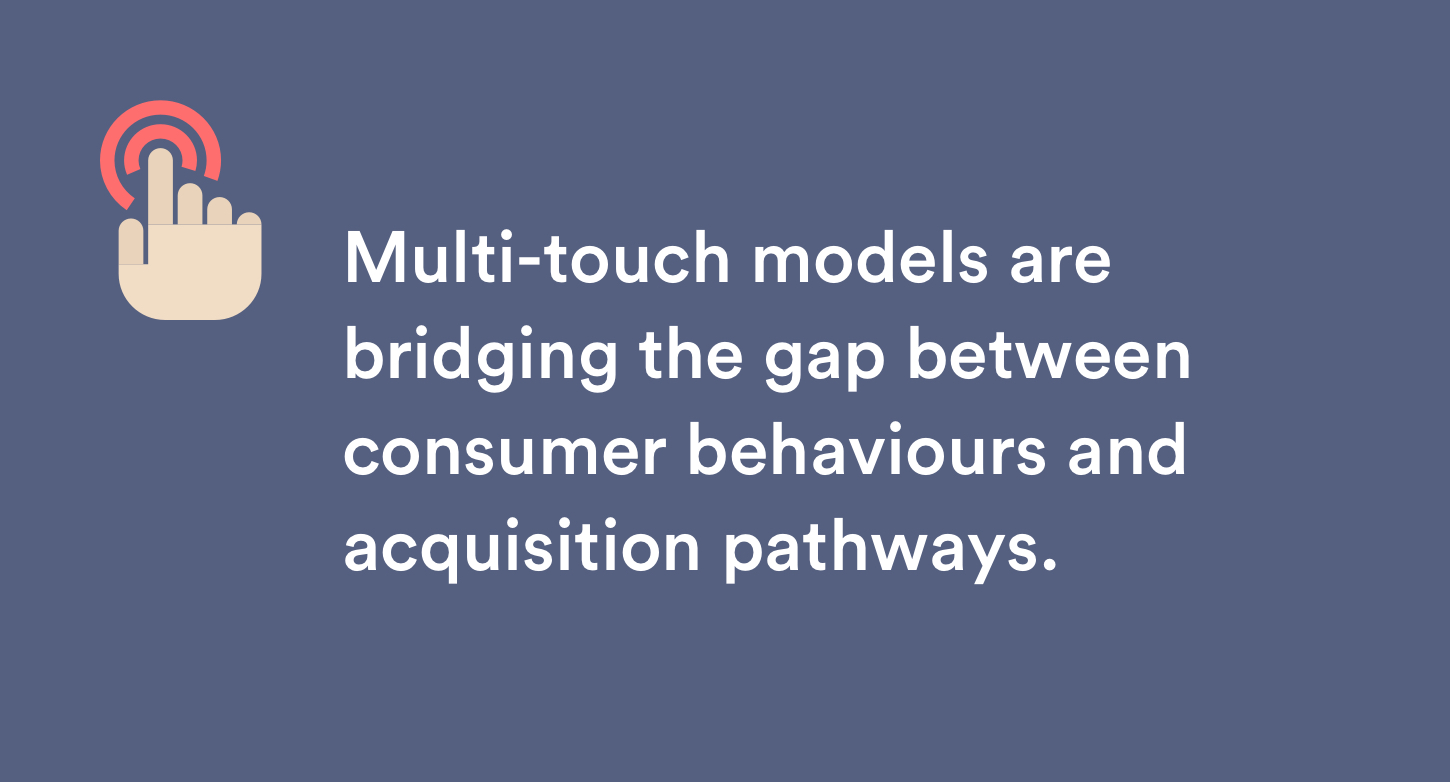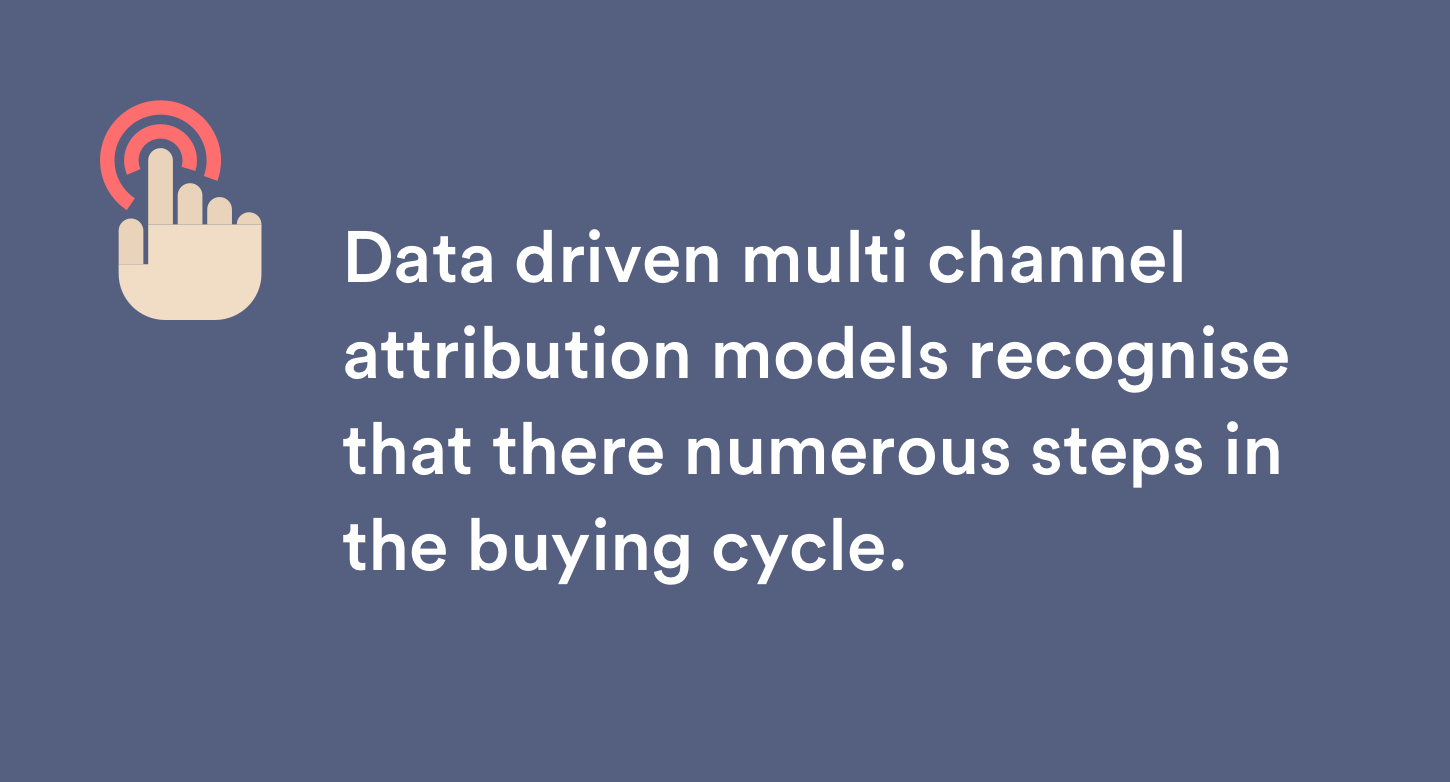BLOG
Multi-Touch Attribution: Been Left Behind?
The pathway to purchase has unlimited digital touchpoints, so why should the last marketing touchpoint get all of the credit?
It’s not the way consumers purchase anymore and shouldn’t be the way marketers attribute value. Enter MTA – multi-channel attribution.
I want to take you through the what, why and how we arrived at a multi-touch attribution model, and the benefits of making the switch to your business.
Marketing Attribution Modelling – A Retrospective
- In The Past
- Traditionally, marketers preferred a single touch attribution model – either the last click or first click attribution model. This assigns all the value to a single touchpoint (you can guess which one) in impacting the purchase.
- Marketing decisions were made based on cost-per-acquisition results for individual channels.
- In The Present
- Consumers are spending more time online doing research and purchasing, while marketers are measuring more behaviours than ever before. A multi-channel approach is bridging the gap between consumer behaviours and acquisition pathways.
- In The Future
- The future of attribution modelling is predicted to focus on measuring the value of each touchpoint—both online and offline—to paint an accurate picture of how your marketing channels improve sales.
- MTA measures impact of one channel on another and value creation within a single channel.

Online vs. Offline Channels
Not only has there been a shift in the type of attribution model being used, but also what is being measured. Many marketers make the mistake of only measuring digital attributions, which can result in missing out on key micro-conversions that happen through offline interactions.
MTA accounts for offline and online channels like:
- Offline channels: direct mail, radio, point of sale, television, and appointments.
- Online channels: social media platforms (Facebook, Twitter, Youtube etc.)
So What the Heck Is Multi-Touch Attribution?
Multi-channel attribution modelling helps you determine, and build upon, the impact of touchpoints in the top, middle and bottom of the marketing funnel (TOFU, MOFU & BOFU).
This is necessary to identify which marketing platforms are efficient drivers of business and leads. With this data, businesses can more effectively decide which areas are worthwhile in investing more time and money into.
For example, if a consumer sees an ad on Facebook on their phone and then later decides to visit the website of that product, companies using a last touch attribution model will miss the real value of the Facebook ad in their consumer’s buying journey.
Likewise, many marketers often experience similar situations with their consumers and can overlook marketing channels that actually play a key role in converting leads by adopting a first click attribution model. Cross device attribution is a key benefit of moving to a multi-touch attribution model.
Data-driven multi-channel attribution models recognise the numerous steps in the buying cycle and that each one provides value. New tools allow us to assign a monetary or engagement value to that touchpoint – and manipulate the buying pathway to make the sales engine roar.

Where Do We Go From Here?
As a marketer, thinking of yourself as a consumer is the best place to start.
Top 3 tips to get started with MTA:
- Widen your arsenal of metrics you measure across your marketing & sales activity e.g. email opens and click throughs, view through conversions, event attendance, chatbot and Messenger logic trees.
- Change the way you think about view-through conversions. Formerly known as the sleazy uncle trying to be the hero, view-through conversions can finally be given the respect they deserve – as a window into the impact of brand impressions on consumer actions. This tool becomes particularly powerful within a 24 hour window – where formerly ‘fluffy, nebulus branding dollars’ can be tied directly to a conversion and optimised accordingly.
- Get started on the tools. Google Attribution 360, part of the Google Analytics 360 Suite is an enterprise solution for businesses who are already riding the Google train to connect Adwords, DoubleClick and custom offline events. Or, if you’re a resident of Facebook City, take note of the new Facebook Analytics with fully customised sales funnels that connect Pixels, Events & Audiences for rich demographic audiences and lifetime value reporting.
A multi-channel approach isn’t the future, it’s happening now.
This is the single best way to identify and descale underperforming marketing channels, supercharging the channel coordination strategy that works for you.











